Hi everyone,
I hope someone can help me identify what is/was on my regal angelfish.
Background:
I have had multiple fish twitching and shaking their heads and scratching, mostly on the head near the gills. Furthermore some have white stringy poop. Flukes? I have done 4 rounds of prazi and fed with metronidazole and fenbendazole, but it didn’t clear fully. Fish were dropping dead every day. All had empty stomachs. Butterfly, all anthias, genicanthus angel and majestic angel. Thinkinh it could be something else, maybe velvet or uronema, I medicated with CP.
Some got bacterial infections. I then medicated the tank with kanamycin. This cleared the bacterial infections, but the fish wouldn’t eat anymore after about 2 weeks. I filtered with carbon to take all medications out. Fortunately most are eating again, but not the medicated food. Some begin to scratch and twich again.
During treatment I was able to catch my regal angelfish and treated with a bath with kanamycin, furan2 and metro 3 days in a row. I noticed this was really helping him.
All pictures I find of flukes show flukes are larger, velvet is supposed to be round and ich would be larger. Schould I dose metro to the display tank?
Could someone tell from the pictures what the creatures are on mainly the fins, mouth, eyes en gills?
Thanks in advance.
Day 1:
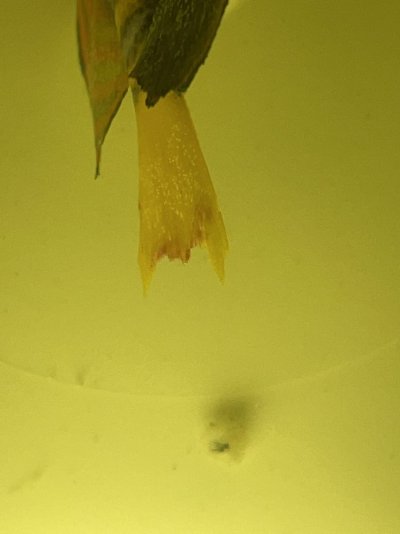
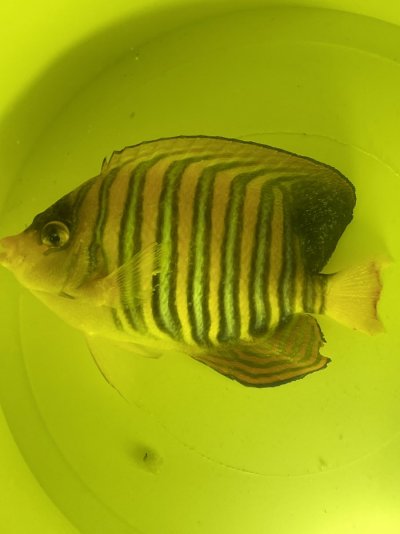
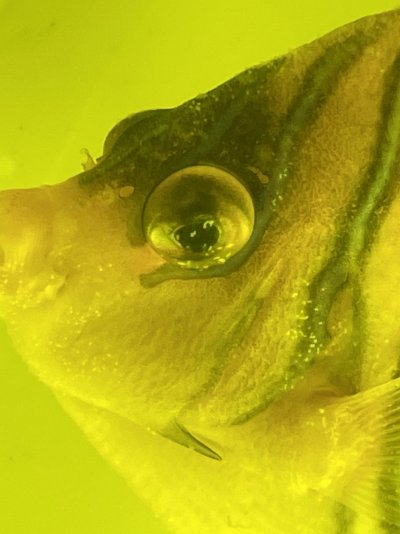
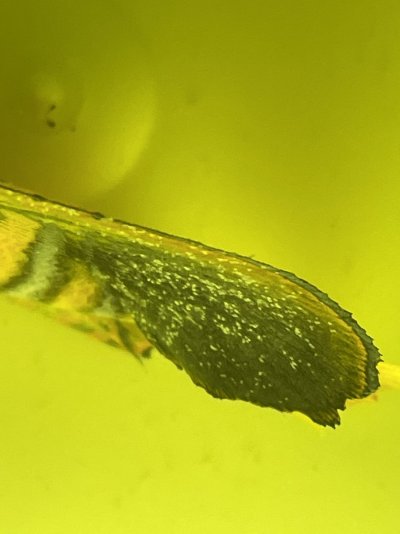
Day 2:
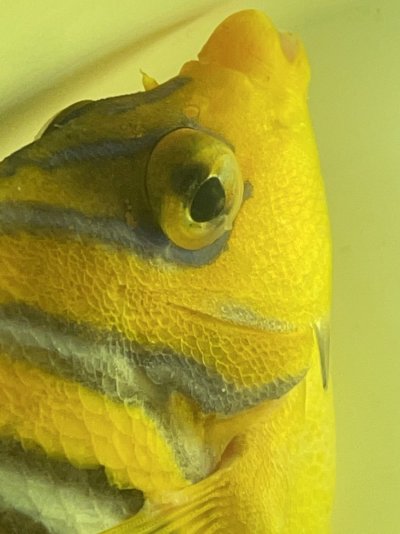
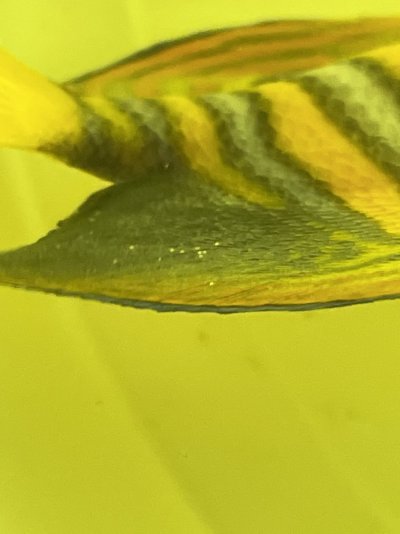
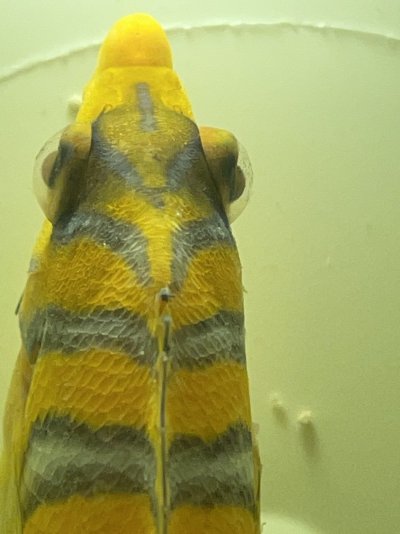
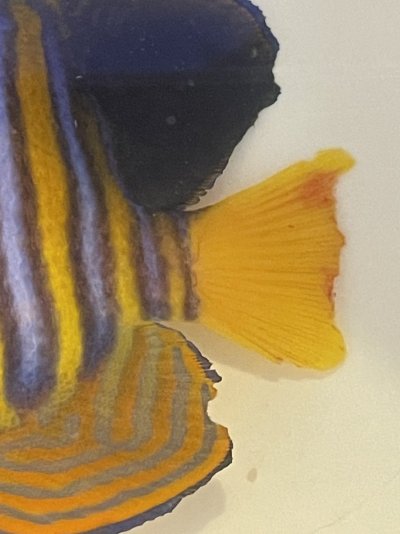
Day 3:
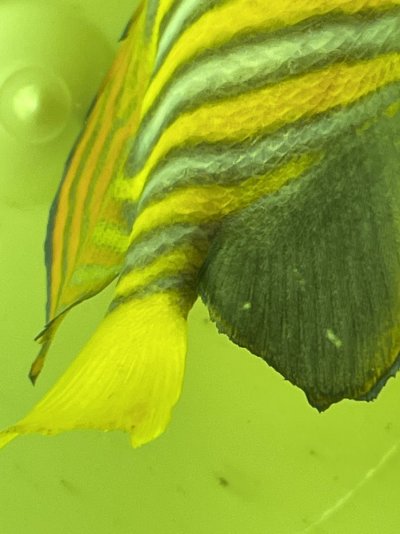
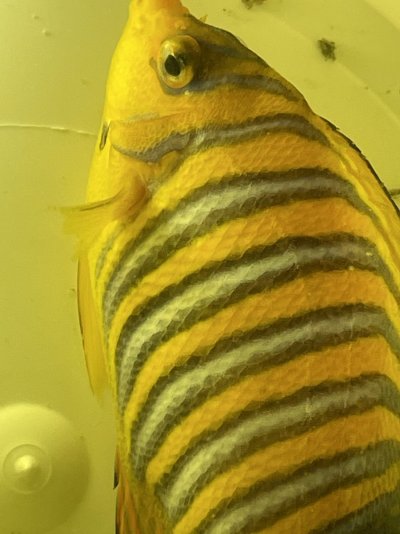
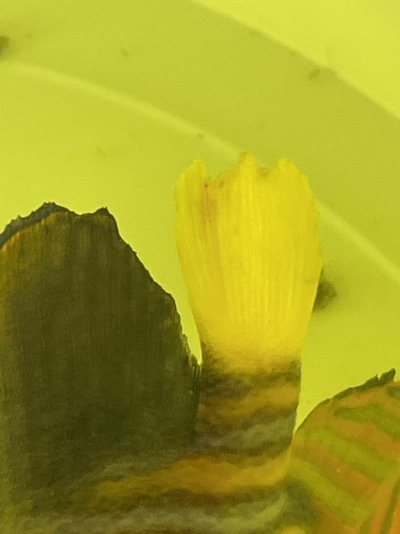
I hope someone can help me identify what is/was on my regal angelfish.
Background:
I have had multiple fish twitching and shaking their heads and scratching, mostly on the head near the gills. Furthermore some have white stringy poop. Flukes? I have done 4 rounds of prazi and fed with metronidazole and fenbendazole, but it didn’t clear fully. Fish were dropping dead every day. All had empty stomachs. Butterfly, all anthias, genicanthus angel and majestic angel. Thinkinh it could be something else, maybe velvet or uronema, I medicated with CP.
Some got bacterial infections. I then medicated the tank with kanamycin. This cleared the bacterial infections, but the fish wouldn’t eat anymore after about 2 weeks. I filtered with carbon to take all medications out. Fortunately most are eating again, but not the medicated food. Some begin to scratch and twich again.
During treatment I was able to catch my regal angelfish and treated with a bath with kanamycin, furan2 and metro 3 days in a row. I noticed this was really helping him.
All pictures I find of flukes show flukes are larger, velvet is supposed to be round and ich would be larger. Schould I dose metro to the display tank?
Could someone tell from the pictures what the creatures are on mainly the fins, mouth, eyes en gills?
Thanks in advance.
Day 1:




Day 2:




Day 3:



Last edited:















